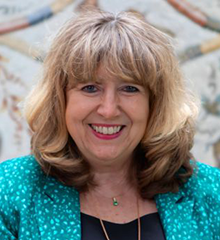You are here
Statement by Ms. Astrid Schomaker on World Migratory Bird Day 2025

Ms. Astrid Schomaker
Executive Secretary
Convention on Biological Diversity (CBD)
Each year, millions of birds take to the skies, embarking on extraordinary journeys across continents and reminding us of the fascinating workings of nature. Armed with their wings and natural compass, their epic voyage has inspired –and continues to inspire—artists, writers, poets and many of us who watch migratory birds fly past in awe.
In many parts of the world, the familiar sounds and sights of migratory birds are a marker of natural cycles and seasons and form part of culture and tradition, reminding us that living in harmony with nature is the natural state of humankind, before unsustainable consumption and production, among other drivers, upset the balance.
Migratory birds are not just a wonder of nature but also an essential part of the web of life. They are crucial for pollination and pest control, which means we owe them a fair share of the food we eat. They contribute to sustaining the ecosystem services that provide us with countless benefits.
This year the focus of World Migratory Bird Day is on “Shared Spaces: Creating Bird-Friendly Cities and Communities”. In today’s urban world, sustainable urban planning for more bird friendly cities and communities makes a massive contribution to broader efforts aiming to reduce habitat loss, the disruptive impacts of climate change, invasive species, and other drivers of biodiversity loss.
Caring for migratory birds is an important part of the healthy human-wildlife interactions that the Kunming-Montreal Global Biodiversity Framework (KMGBF) sets out to achieve. Target 4 calls for halting species extinction and managing human-wildlife interactions. Target 12 of the KMGBF promotes urban planning that enhances both human well-being and biodiversity. Other targets—such as those addressing spatial planning and the sustainable use of wild species—are equally important for migratory bird conservation.
Nature knows no boundaries. Just as birds whizzing across oceans and continents, we too must work across sectors, cultures, and communities—flocking together, like birds of a feather, and accelerating action for a whole-of-government, whole-of-society push for harmony with nature and sustainable development.
